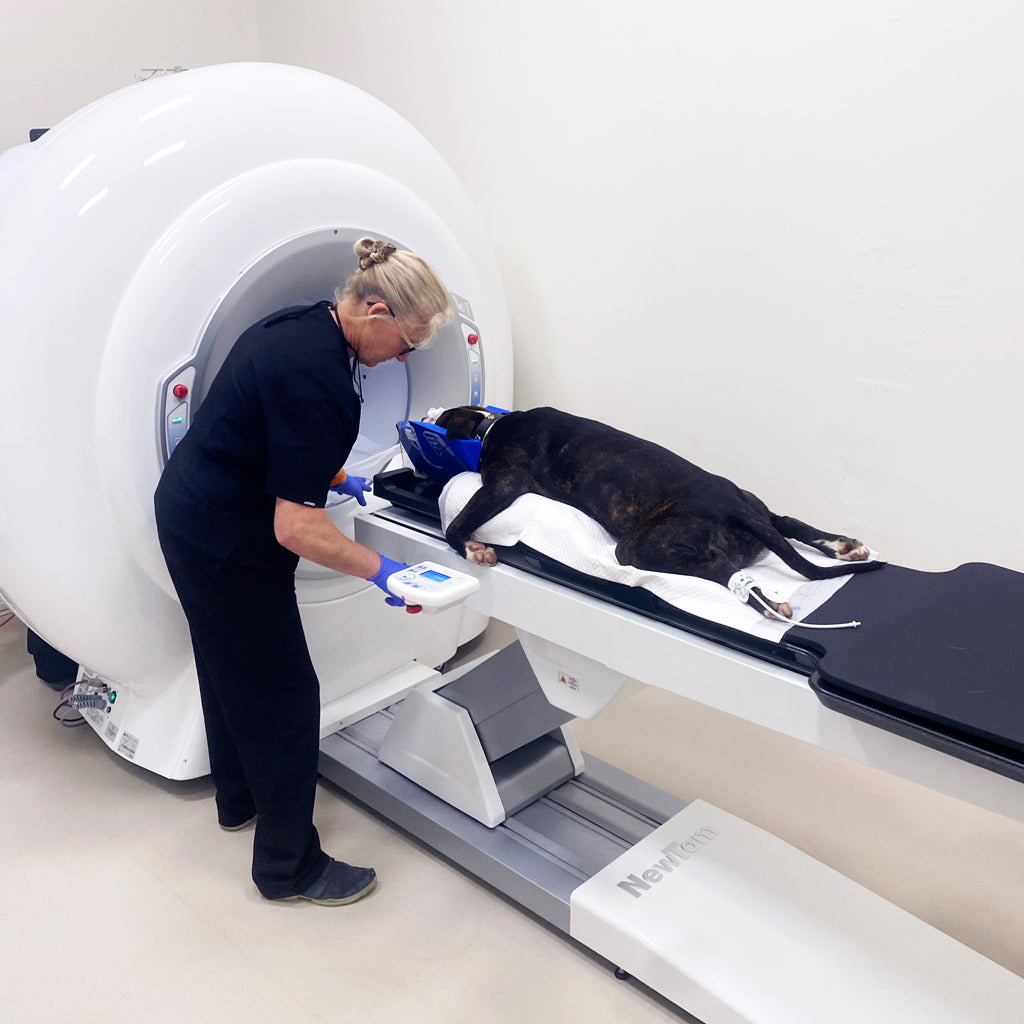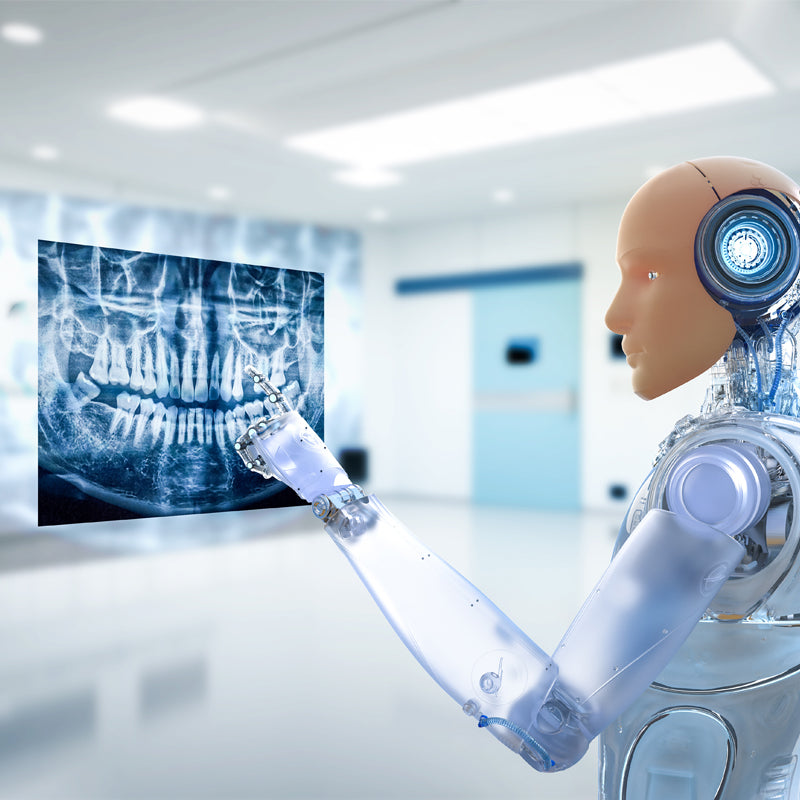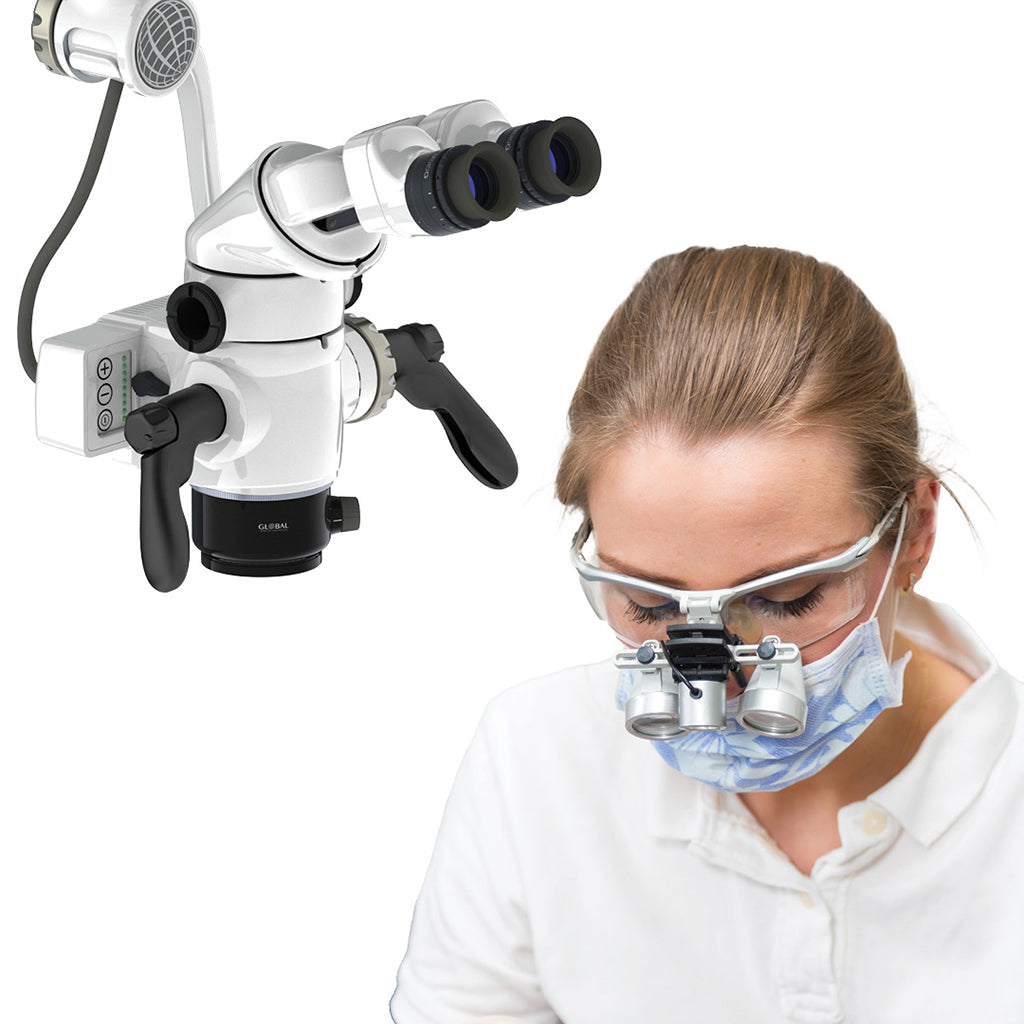Cone Beam Computed Tomography (CBCT) scanners have revolutionised veterinary imaging, providing exceptional quality and detail for diagnosing and treating a wide range of animal health concerns.
Animal health is further enhanced by Eco Dose mode and SafeBeam™ technology, an exclusive function on NewTom devices that uses the patient’s anatomy as a starting point for automatic calculation of the X-ray dose.
The versatility of the 5G XL VET makes it the perfect device for otorhinolaryngological and muscular-skeletal diagnoses, with or without radiocontrast agents, for complete upper airway analysis and for the investigation of dental and maxillofacial pathologies.
Applications of CBCT in Veterinary Medicine
- Dentistry: CBCT is the gold standard for dental imaging in animals, particularly for complex cases like root fractures, unerupted teeth, and jaw tumours. The 3D visualisation helps in precise treatment planning for dental procedures like extractions, root canals, and orthodontics.
- Orthopaedics: CBCT excels in examining bones and joints, aiding in diagnosing fractures, dislocations, arthritis, and bone tumours. It also facilitates preoperative planning for orthopaedic surgeries, ensuring accurate implant placement minimising complications.
- Neurology: CBCT plays a crucial role in visualising the skull and brain, assisting in diagnosing neurological disorders like epilepsy, tumours, and skull fractures. It also helps guide minimally invasive procedures like biopsies and shunt placements.
- Ophthalmology: CBCT provides detailed views of the eye socket and its contents, aiding in diagnosing eye tumours, foreign objects, and fractures. It also helps plan the success of ophthalmic surgeries.
- Otolaryngology: CBCT facilitates the examination of the inner ear and sinuses, assisting in diagnosing infections, tumours, and other abnormalities in these delicate structures.
Advantages of CBCT over Traditional Imaging Techniques
Compared to conventional X-rays and even traditional CT scans, CBCT offers several distinct advantages in veterinary medicine:- Superior image quality: CBCT produces high-resolution 3D images, revealing intricate anatomical details often obscured in 2D X-rays.
- Reduced radiation dose: CBCT scanners deliver significantly lower radiation doses than traditional CT scans, making them safer for both animals and veterinary personnel. Dosage is adjusted to the animals anatomy.
- Faster scan times: CBCT scans are typically completed within minutes, minimising patient discomfort and stress, particularly for anxious or sensitive animals.
- Cost-effectiveness: While more expensive than X-rays, CBCT is often more cost-effective than traditional CT scans, especially considering its superior diagnostic capabilities.
“The 5G XL CT scanner has revolutionised the treatment recommendations for patients. The exceptional detail and resolution of the images provide an unmatched level of clarity, allowing me to confidently formulate precise treatment plans. The sheer volume and quality of data often eliminates the need for additional testing, leading to better outcomes for my patients, happier clients, and the satisfaction of knowing I'm providing the absolute best care possible.”
Dr Kirsten Hailstone, AVDOS
To find out how CBCT technology can make a significant impact to your practice in how you approach the diagnosis and treatment of your patients, call our expert team today 1300 033 723 or email info@inline.com.au





